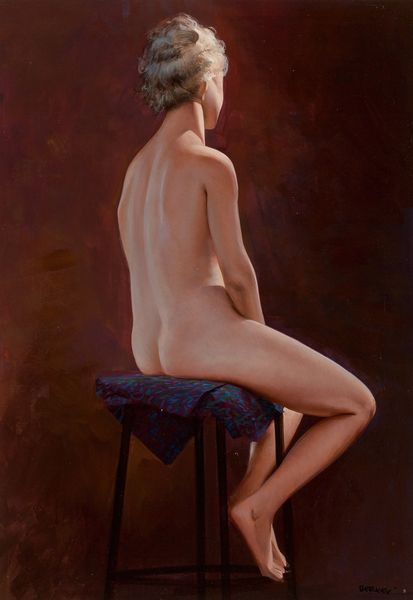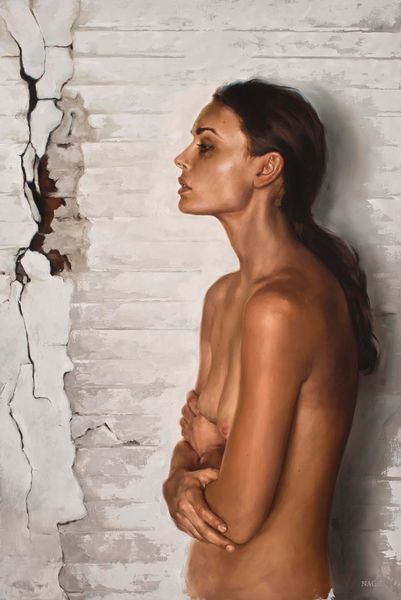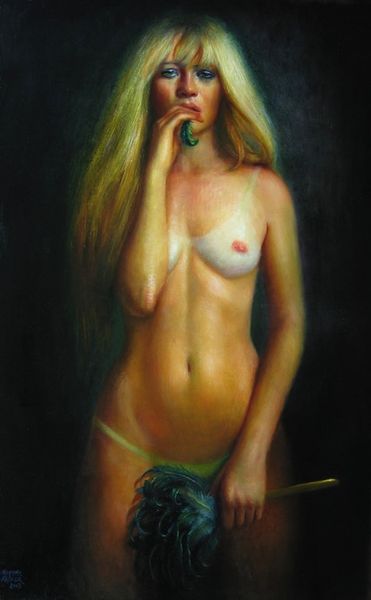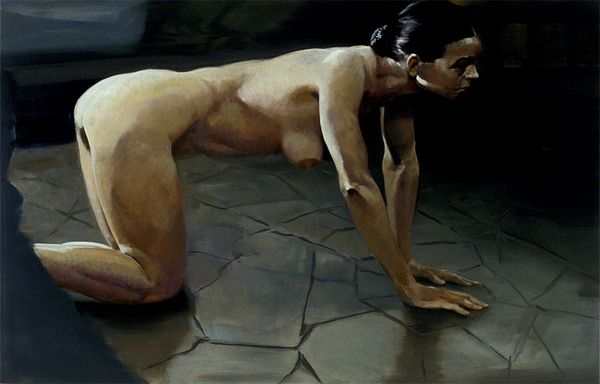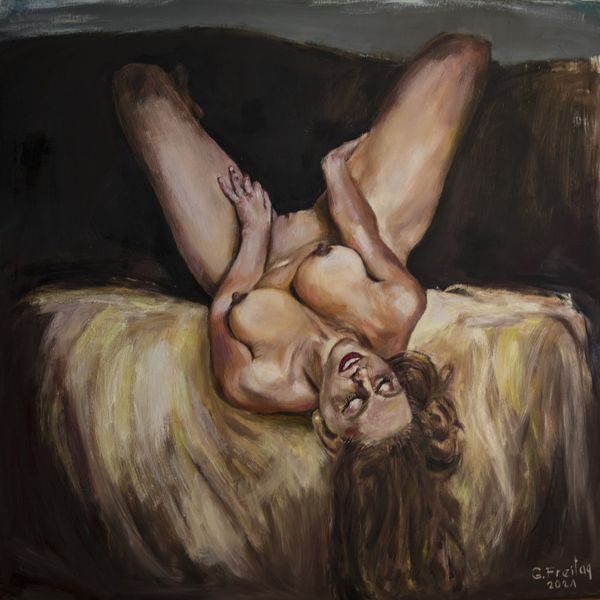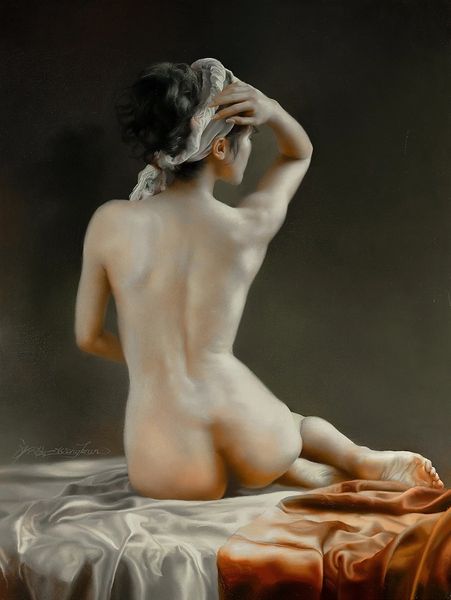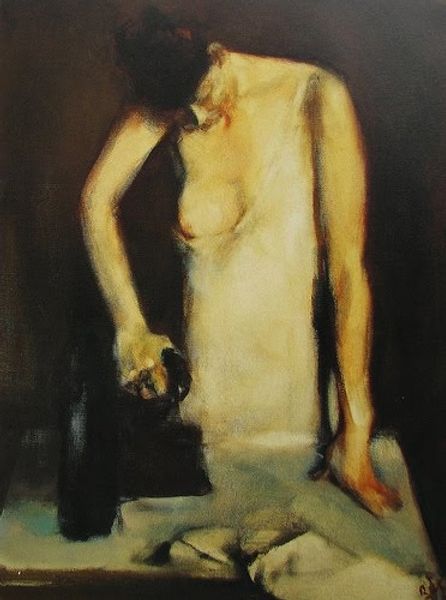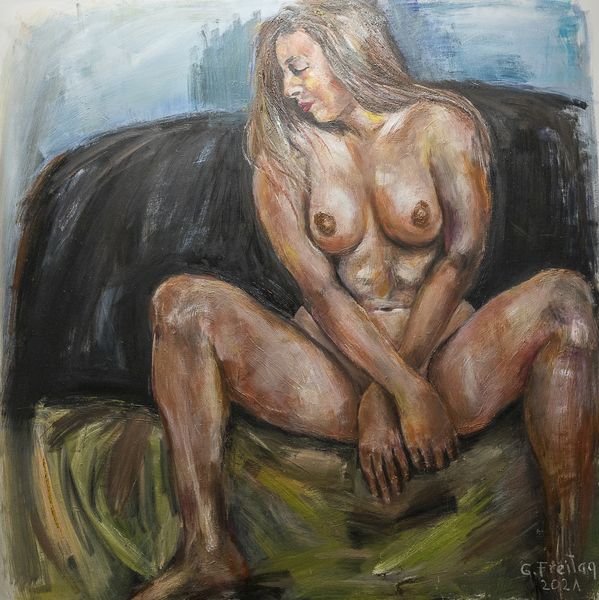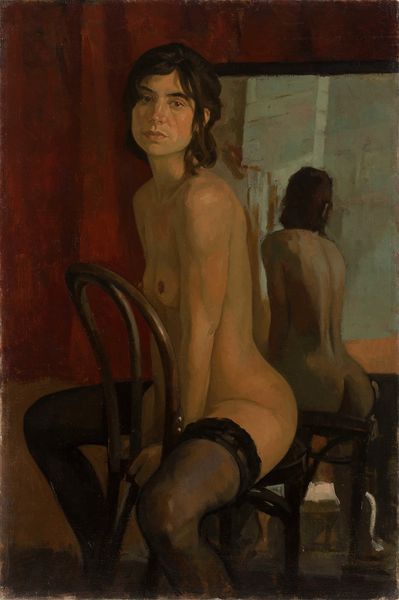
painting, acrylic-paint
#
portrait
#
figurative
#
painting
#
acrylic-paint
#
figuration
#
portrait reference
#
acrylic on canvas
#
nude
#
portrait art
Copyright: Modern Artists: Artvee
Curator: This is Aaron Nagel's "Figure Study, 'Chanon'," an acrylic on canvas created in 2012. Editor: It's strikingly elegant and somehow melancholic, even with the exposed figure. The use of light emphasizes a vulnerability in the subject. Curator: Nagel’s process is fascinating. He frequently documents and shares his studio practice online, providing a clear window into his techniques with acrylic paint. One might see the visible brushwork here, especially in the background, as part of this commitment to transparency in artistic labor. Editor: The composition feels classical, yet the presentation challenges traditional representations of the female nude. The subject's gaze is averted, as if reflecting internally, removing any sense of objectification often seen in art history. It begs the question: who is the implied audience? Nagel seems conscious of the power dynamics inherent in portraying the human form. Curator: And what about the title? The specification, "Chanon," implies a personal relationship to the subject. It introduces an element of the social sphere into what might otherwise be seen as purely formal exercise in figuration. The reference immediately elevates her from being a simple form study. Editor: It’s difficult to divorce any representation of the body from broader social currents and institutions. Think about how museums, with their historical biases, impact what stories are told through such images, who is included, and how those figures are presented. The fact that Nagel acknowledges a specific person allows for perhaps a better understanding of the work’s value. Curator: It forces us to acknowledge the human element of artistic production itself. Seeing it now I believe this work also reveals some dialogue and social connections outside a patriarchal environment of display or production. Editor: An astute observation. This painting makes us question not just what we see, but the frameworks through which we view art and how those very frameworks have impacted our own aesthetic expectations. Curator: Indeed. It’s rewarding to engage with work that simultaneously embraces and complicates its historical context. Editor: A contemplative end, allowing a fresh insight of classical traditions!
Comments
No comments
Be the first to comment and join the conversation on the ultimate creative platform.
